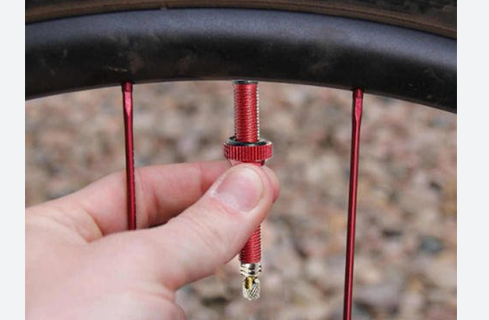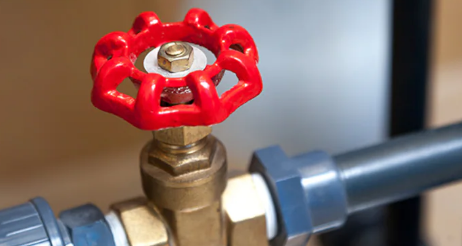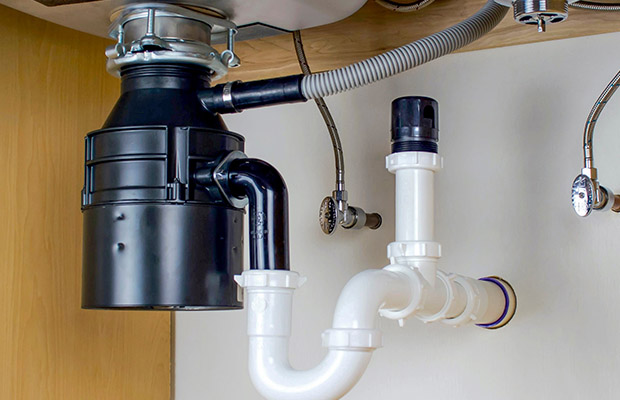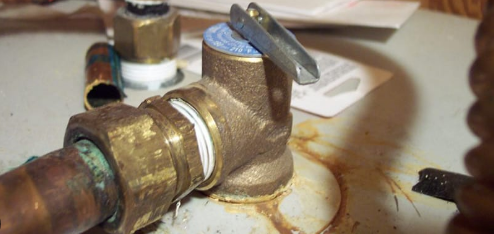
The water heater pressure release valve may be to blame for any water pooling you’ve seen around your hot water heater. What does this mean, and what should you do about it?
Table of Contents
What is the Temperature Pressure Relief Valve (TPR)
At your water heater, there is a specialized valve known as a TPR valve or pressure relief valve. Usually, your water heater has this valve on the top or side.
If the pressure inside your water heater rises too high, the valve releases the water. If pressure were to steadily build inside your water heater, heated water would expand, turning it into a ticking time bomb.
Fortunately, the TPR valve is one of the many safety features on the water heater that help shield us from an explosion.
The Discharge Tube
A TPR valve must have a discharge pipe or tube, as seen in the featured image. This tube must always be pointed straight down and never upward. This is so that hot water can be released from the TPR valve as water is released. Therefore, for safety, extremely hot water should discharge to the ground.
Additionally, if a pipe were to rise, water would have to empty against the force of gravity. It is therefore possible that a slow drip from the TPR valve will collect water in the tubing and eventually cause the valve to rust out rather than empty it to the floor.
A discharge tube that is perfectly installed and connected to a TPR valve is shown in the picture below.
By the way, here are the code requirements for discharge tubing in Florida:
504.6 Requirements for Discharge Piping
The discharge piping serving a pressure relief valve, temperature relief valve or a combination thereof shall:
- not have a direct connection to the drainage system.
- discharge into a space with an air gap that is in the same room as the water heater.
- Not be less in diameter than the valve being served and discharge to the air gap at full size.
- provide piping only for one relief device and not for any other relief devices or equipment.
- Discharge to the ground, to the pan feeding the water heater or storage tank, to a waste receptor, or outside.
- discharge in a way that doesn’t result in property damage or personal injury.
- discharge to a termination location where building occupants can easily see it.
- Not be trapped.
- be installed so that water will flow naturally.
- End not less than twice the discharge pipe diameter above the waste receptor’s flood level rim and not less than 6 inches (152 mm) above the floor.
- The end of such piping must not have a threaded connection.
- absence of valves or tee fittings
- be built from materials that are listed in Section 605.4 or materials that have been evaluated, rated, and approved for this use in accordance with ASME A112.4.1.
- be installed with insert fittings so that the relief valve discharge piping is one nominal size larger than the size of the relief valve outlet. Such tubing must have its outlet end secured.
What is the Importance of a Water Heater’s Pressure Relief Valve?
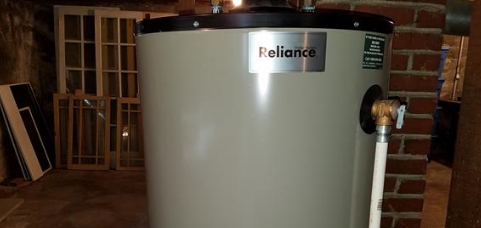
When the pressure or temperature in the water tank rises too high, the pressure relief valve allows steam and water to escape. The most common reason for water heater explosions is a malfunctioning valve, which can cause the water heater to go off. In pressure relief valves for water heaters, the valve is programmed to open when the pressure exceeds 150 psi.
What Are the Causes of Leaking Water Heater Pressure Valves?
1. High Water Pressure
Not all leaking valves are broken valves. The pressure relief valve on a water heater might occasionally leak even though it is working as it should. Some water may leak as the excess pressure in your water heater system is released. This makes it necessary to check the water heater’s pressure.
It is not a difficult process. You can always call your technician if you don’t feel comfortable checking the water pressure. Use a pressure gauge to check the pressure and secure it to either the hot water pipe or the cold water pipe. The outdoor hose faucets, on the other hand, are among the simplest locations to connect the pressure gauge. To do this, make sure the pressure gauge you buy is made for garden hoses.
Lock all water faucets and outlets. The ideal pressure range is 40 to 80 psi. High pressure may be the cause of the leak if the gauge registers 150 psi or more. High water pressure is not the cause of the leak if there is a consistent leak and the water pressure is normal.
If the pressure reading is high, you might have a problem with a closed plumbing system. Thus, the pressure rises as it ought to when the water is heated. However, since there is nowhere else to go, the valves open to release the pressure. Fortunately, installing an expansion tank that provides the pressure with an outlet other than a pressure relief valve can solve this problem.
2. High Water Temperature
Although it is uncommon, excessively high temperatures may have caused your water heater’s pressure relief valve to leak. But the water needs to be close to boiling. Make sure the hot water faucet is turned on to check the water’s temperature. After one minute of running the water, check the temperature with a meat thermometer. Around 120 degrees should be the temperature. You should have the water heater checked if it is more than this. To activate the relief valve, the water’s temperature would need to be close to 212 degrees.
3. the Wrong Pressure Relief Valve Was Installed
Even though it’s unusual, it’s not impossible for this to happen. A pressure valve for another appliance could have been used by your technician because they serve the same purpose. These other pressure relief valves, however, are programmed to close at a lower psi. For instance, boiler pressure valves shut off at 30 psi. You will probably experience leaks right away if the appliance is installed in a water heater. Because of this, this is an unlikely cause of the leak if you’ve had your water heater for years but have only recently noticed leaks.
4. Your Water Heater’s Pressure Relief Valve Has Not Been Used in a While
If the pressure relief valve on your water heater hasn’t been opened in a while—let’s say, a few years—a small leak could develop. Even though this leak is typical and may not be a sign of a problem with the water heater system, you might need to replace the valve if it worsens. As opposed to repairing the valve and dealing with the same issue down the road, replacing the valve entirely is more cost-effective.
5. Your Pressure Relief Valve Has Failed
A faulty pressure relief valve may also be the root of a leak in your water heater’s pressure relief valve. Pressure relief valves hardly ever fail, but excessive wear and poor installation can result in significant harm. A damaged pressure valve can’t be fixed; instead, it needs to be replaced. Pressure valves, however, are reasonably priced, typically costing $30 or less.
What Can You Do to Prevent Water Heater Problems?
- Know your water heater and how it functions– For people without much technical knowledge, water heaters can be frightening. Recognize the role that each component of the system—including the water shutoff valve, drain valve, thermostat, and pressure relief valve—plays in heating the water. This makes routine maintenance easier and guarantees that you have a solid understanding of any malfunctions.
- Insulate the pipes and the water heater– You can stop condensation while also lowering heat loss by insulating both the hot and cold water pipes. Furthermore, insulating the water heater aids in keeping the water warm even when it is surrounded by chilly air.
- Carry out regular maintenance– Make a habit of checking the condition of the pipes and valves in your water heater on a monthly basis. Additionally, this enables you to detect corrosion and leaks before they become more serious issues. And perform a water heater flush once a year. You should have a qualified technician inspect the system every year because you cannot always identify all issues.
Take Away
Regardless of the potential cause of a leak in your water heater’s pressure relief valve, call a licensed plumber right away. In addition, if you believe the issue can be resolved on your own without professional assistance, make sure a licensed plumber checks the system again to make sure it is operating at its best. It is important to take water heater problems seriously because they can lead to other problems, including explosions.

